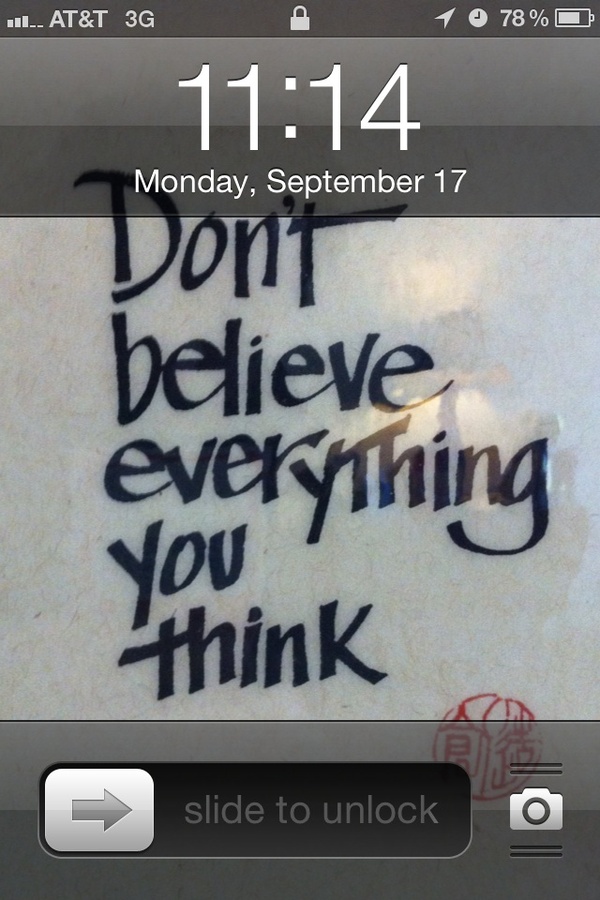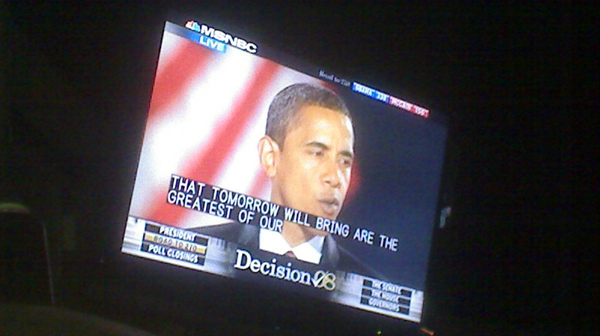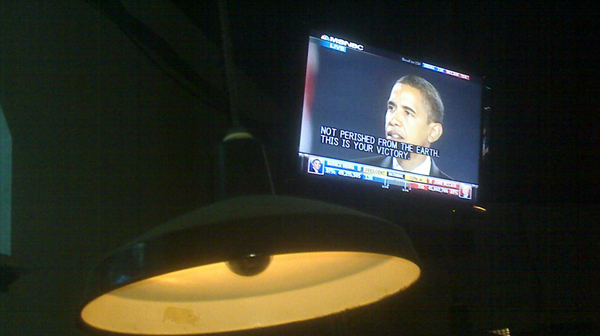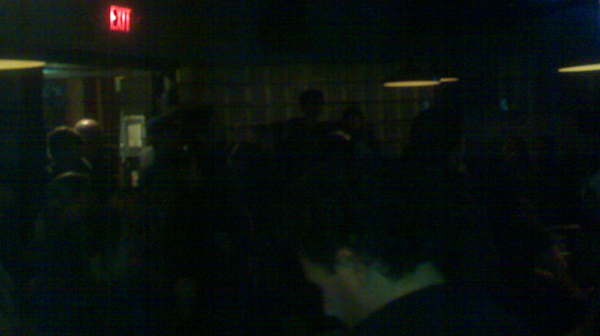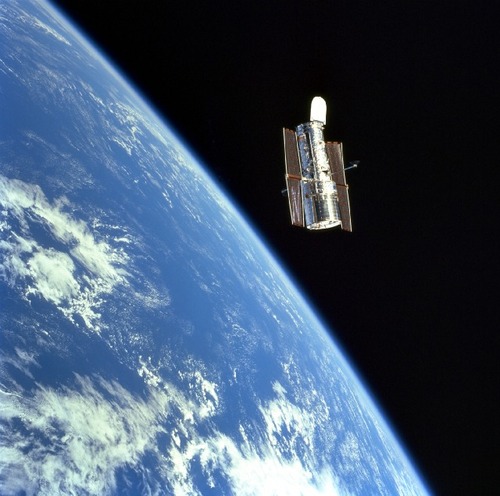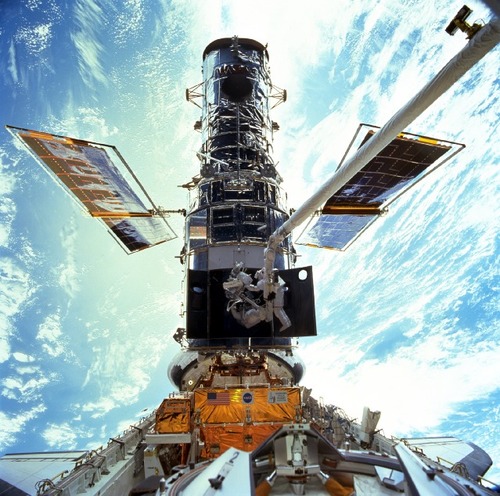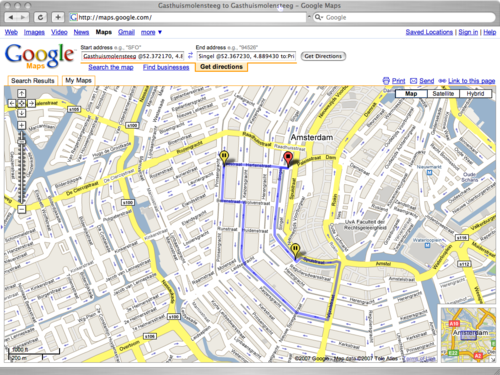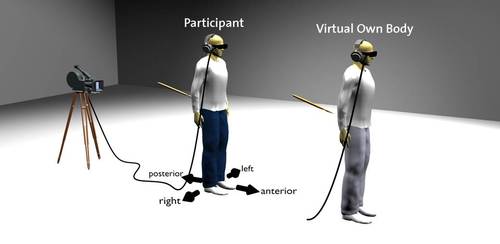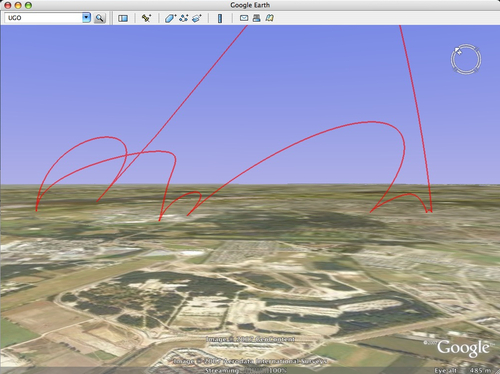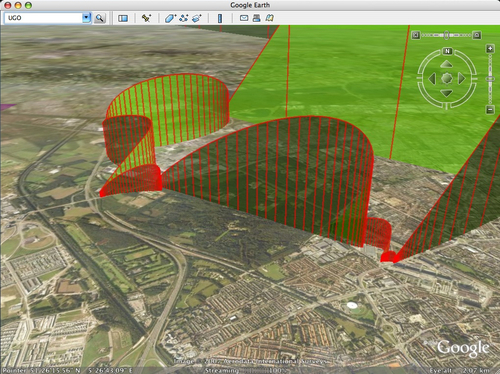This is the UGO archive | Back to Main
tobearchived after 6 years
Posted on Monday, September 17, 2012
After exactly 6 years (first post) its time to archive this blog. I've had a great time keeping a trail of my online journeys over these past 6 years and it served me well in my worldly travels, but its time for a new itinerary. I will keep the content up for the Google but I won't be posting here anymore. If you're interested in staying connected, follow me on Twitter @tobedetermined until I find a new home to share my current and future travels.
10 Bucks Well Spend
Posted on Wednesday, September 24, 2008
Following on from yesterday's syndication of Tim O'Reilly's keynote at the NY Web2.0, I just finished watching the documentary he has been pointing out on several of his keynotes: A Crude Awakening: The Oil Crash. Buy it on itunes from their website and have a peak into the future of post cheap oil society. Quite informative...
Tim O'Reilly's Call to Action
Posted on Tuesday, September 23, 2008
And it ain't throwing sheeps. From last week's Web 2.0 Expo in New York entitled "Web Meets World".
(via)
tobedetermined.org Extended Credo
Posted on Monday, September 1, 2008
Update: A post over at O'Reilly Radar by Nat Torkington reminds me of another quote I've used in the earlier days of this blog. It's a (famous) quote from William Gibson: The future is here, its just not evenly distributed yet. In his post, Nat refers to another quote from Gibson that brings the overarching point home:
One of the things our grandchildren will find quaintest about us is that we distinguish the digital from the real, the virtual from the real. In the future, that will become literally impossible. The distinction between cyberspace and that which isn't cyberspace is going to be unimaginable. When I wrote Neuromancer in 1984, cyberspace already existed for some people, but they didn't spend all their time there. So cyberspace was there, and we were here. Now cyberspace is here for a lot of us, and there has become any state of relative nonconnectivity. There is where they don't have Wi-Fi.
Having a 3-day weekend does have its benefits (like in: having an extra evening behind your computer?). Think I just stumbled upon something like an extended credo for this blog (beyond tobedetermined.org: A blog about outer space, cyberspace, their common future and all that is leading up to it... ). I started gathering some quotes that resonated with me over the years and ended up with this list (read from top to bottom, in that order):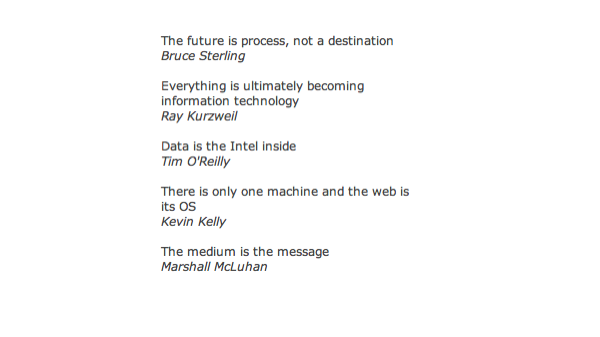
I am sure there are more out there that would fit this list, so if you have any suggestions pls let me know.
Summer 2008
Posted on Friday, August 1, 2008
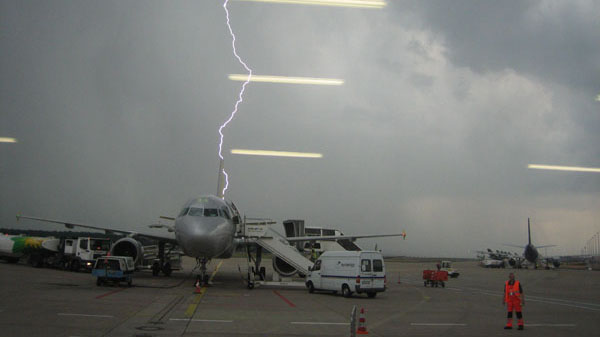
Back from a week of Internetless holiday on the island of Korcula (above photo was at Koln airport just before we were told we could board the plane ;-). Catching up here are a few relevant tidbits:
- The Economist's commentary on NASA's 50th anniversary provides a sharp dissection of NASA's past, present and future. Its the most sensible story on space and NASA I've read in a long while. As always, the comments are worth reading too, if only to see how space proponents bring their arguments into gear to downplay the article's 'hammer on the nail' analysis
- Sanfran article of the week about twitter, relationships, and the bay area working spirit
- Missed OSCON, but here's a 37min intro and Tim Oreilly's comments
- A great discovery: this TED video by kevin kelly. I especially like his McLuhan Reversal analogy. Have to watch it again.
The Stone Age Didn't End Because of a Shortage of Stones
Posted on Sunday, July 20, 2008
Bruce Sterling comments inline on this passionate call by Al Gore for the US to become carbon fuel independent in 10 years.
Time to put some solar panels on my roof here in Palo Alto. Or wait, wasn't I first gonna spend 2 weeks flying around Europe for my holiday, buy the iPhone and upgrade my car (from what I hear SUV's come cheap these days).
Could this be the "Moonrace" of the 21st century?
We need you. And we need you now. We're committed to changing not just light bulbs, but laws. And laws will only change with leadership. On July 16, 1969, the United States of America was finally ready to meet President Kennedy's challenge of landing Americans on the moon. I will never forget standing beside my father a few miles from the launch site, waiting for the giant Saturn 5 rocket to lift Apollo 11 into the sky. I was a young man, 21 years old, who had graduated from college a month before and was enlisting in the United States Army three weeks later.I will never forget the inspiration of those minutes. The power and the vibration of the giant rocket's engines shook my entire body. As I watched the rocket rise, slowly at first and then with great speed, the sound was deafening. We craned our necks to follow its path until we were looking straight up into the air. And then four days later, I watched along with hundreds of millions of others around the world as Neil Armstrong took one small step to the surface of the moon and changed the history of the human race.
We must now lift our nation to reach another goal that will change history. Our entire civilization depends upon us now embarking on a new journey of exploration and discovery. Our success depends on our willingness as a people to undertake this journey and to complete it within 10 years. Once again, we have an opportunity to take a giant leap for humankind.
Yup
Posted on Thursday, July 17, 2008
Wading through +2k unread posts in my list of RSS feeds (Bruce Sterling's Beyond the Beyond).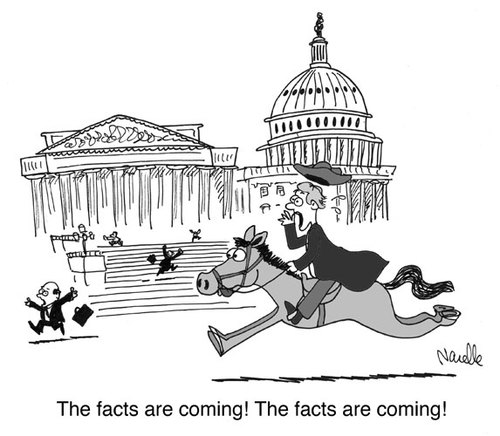
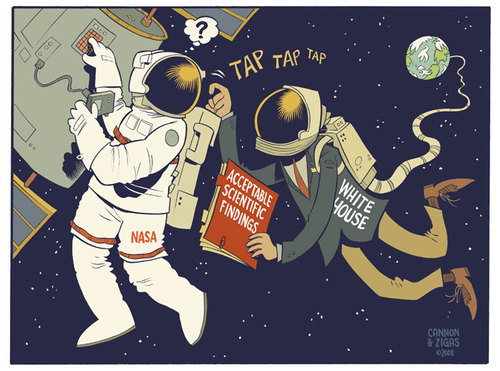
Its You They're After
Posted on Saturday, July 12, 2008
The best analysis on Google's Lively I've read sofar comes from RealityPrime: Its not so much about giving people a nice virtual world to play with, its providing a new interface to harvest new and previously untapped user behaviour. Which reminds me of an excellent article I was send the other day on the near future of advertising, a must-read.
Friday Afternoon Yawns
Posted on Saturday, June 7, 2008
OgleEarth is on the ball with his critique on Walt Disney Park's layer in Google Earth being 'the next best thing to being there'. Reading it, I recognise I am reading my own unexpressed yawn about it (without having had a look at it myself I do admit, but that tells it all I guess). A virtual Disneyland devoid of people, and no possibility to take a ride, WoW!? If only I had some time to go back to the enthusiasm while working on UGO, but for some reason, its not that attractive at the moment. Even with the ability to bring it into the browser, which is pretty cool yes, apart from the techno fetish, there's at the moment not much occasional inspiration to throw time at Google Earth (apart from learning the javascript GE API implementation perhaps). Has anybody heard anything about Second Life lately btw?
On a more enthusiastic note, I attended the Google I/O conference 2 weeks ago here at Moscone West. Now that was exiting! Not so much from a Google Tech or developers point of view (albeit that was pretty inspiring too, mostly diving into the Google App Engine, on which I had my first encounter with the GE browser plugin), but more from a cultural real people point of view. Apparently they brought Google culture over from the Googleplex to the conference center. I lost my camera in the meantime so can't show you my pictures of all the beanbags, free food, and other goodies, but man, that's a sweet company culture (and flickr tags are there to prove it). And a young crowd too.
I recognised the same kind of culture here at Yahoo HQ earlier this week where we were sitting in on a meeting on the upcoming Yahoo Hackday. Working at a place where the coffee corner closes 30 minutes after lunch has been served (that's around 2:00pm folks), and where the cappucino comes out of a prefab instant-make coffee-crap-machine, I am all for Google joining the ranks here on the NASA Ames premises. And I certainly hope some of their culture bleeds over the fence into Ames, which I'm sure it will (not sure if i'll be around to witness it though as they only start building in 2013).
As usual, these high profile Google announcements draw quite a bit of cynical critisism from the likes of Bull's rambles, Valleywag and ZDNet but that's as yawn inspiring as the Disney layer in Google Earth.
My two cents for the weekend: Ask not what Google or Yahoo! can do for you, but what Google/Yahoo! culture can do to your space program.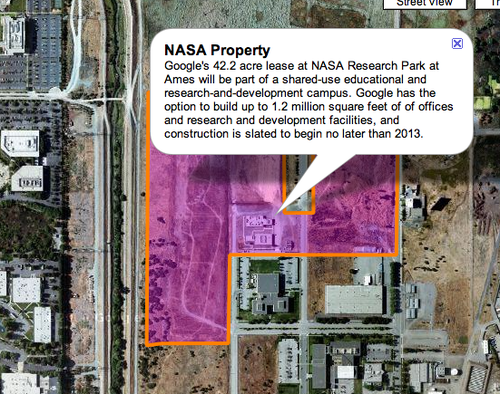
(see it in google maps, or, if you really really want to, in Google Earth)
View Larger Map
Some views to enjoy (until I get back to posting regularly)
Posted on Tuesday, May 6, 2008
A.C. Clarke died today
Posted on Wednesday, March 19, 2008
...(bbc news)
update: Google's Chief Evangelist Vint Cerf also says goodbye to Clarke in this post. It includes a nice video of Clarke recorded end of last year.
Time to get on the bus
Posted on Wednesday, February 27, 2008
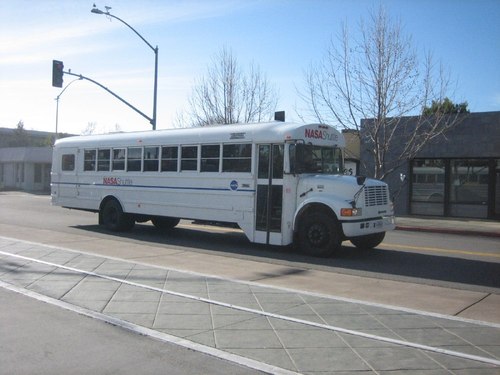
Ok, so its time to give a brief update on my (physical) whereabouts. Since last thursday I moved from Amsterdam to Mountain View, Silicon Valley to work with Chris Kemp and his collegues over at NASA Ames starting next monday March 3rd. Weehoo! Finally, a long held dream is coming true, taking part in the upcoming merger of outer space and cyberspace, right at the heart of where all things space are happening. Couldn't be better!
As for this blog, looks like I will be using it from now on to give you a personal insight in my personal and professional experiences here in the Valley. Sofar, these include a great arrival and first few days enjoying the Bay Area rainy season (yes, it can rain here...), a visit to the Vertical Motion Simulator on NASA Ames premises last friday (for photos have a look at this flickr album), my first NASA vrimibo with Ames director Pete Worden, Chris Kemp and several of my upcoming collegues (vrimibo is short for 'vrijdag middag borrel', Dutch for the traditional friday afternoon drink), a first counter-clockwise drive around the Bay Area, and writing off the first item on my wishlist of things-to-do-when-I-get-to-the-Bay-Area: attending a Long Now seminar in San Francisco (on which more in a follow-up post).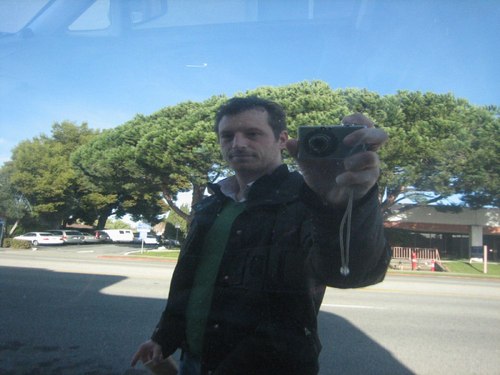
Google Space Agency
Posted on Monday, November 26, 2007
A quick backlog of links related to the Google NASA coop. They're working on it down at Ames in what is called the 'Planetary Content Team' (nice title):
The Planetary Content Team at NASA's Ames Research Center develops software that makes it easier for scientists and engineers to publish and access Earth and planetary imagery and data via the Internet. This includes both educational/outreach content aimed at the general public as well as technical data aimed at the scientific community. Headquartered in the Intelligent Systems Division at Ames, the team also includes partners in other areas of the agency and elsewhere.
They do both the NASA Google Moon work (Google maps only sofar but they're working on a Google
“NASA’s objective is for Google Moon to become a more accurate and useful lunar mapping platform that will be a foundation for future Web-based moon applications, much like the many applications that have been built on top of Google Maps,” said Chris C. Kemp, director of strategic business development at NASA Ames. “This will make it easier for scientists everywhere to make lunar data more available and accessible.”That's gonna come in handy when the robots are going to land on the Moon in the decades to come.
View Larger Map
DinnerTV: Web2.0 Summit videos
Posted on Friday, October 26, 2007
Another good one, Google, Microsoft and TeleAtlas talking about one of the web's edges, i.e. mapping. Btw, if you experience some problems with scrolling through the videos (which is not allowed!?), you can also subscribe to the videos via iTunes and scroll through them that way.
Geofencing
Posted on Tuesday, October 16, 2007
Doing a quick internet scan on GPS enabled devices, I run into an interesting term: Geofencing (e.g. here). Makes me think of draggin' a route on Google Maps.
Finally: a peak inside online mapviewing behaviour
Posted on Thursday, September 27, 2007
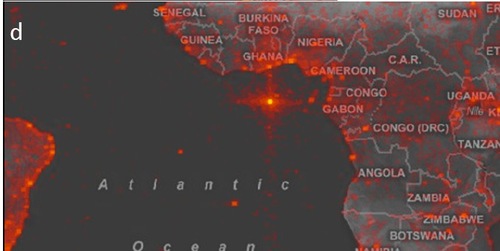
What are we looking at in online interactive mapping systems such as Microsoft's Live Search or Google Earth/Maps? Interesting stuff to wonder about. All Points Blog thinks so too and links to a paper by Microsoft researcher Danyel Fisher entitled Hotmap, Looking at Geographic Attention (above image shows one of many intruiging images from the paper, this one depicting a bright spot at Latitude/Longitude (0,0)).
Google + X PRIZE = Lunar X PRIZE + Google Moon
Posted on Thursday, September 13, 2007
Update: more at Wired & CNN.
Just in: Google Sponsors Lunar X PRIZE to Create a Space Race for a New Generation. More at googlelunarxprize.org. At the same time, Google's LatLon blog announces an update to their version of Google Moon, an outcome of the collaboration between Google and NASA Ames.
Geoweb In The News
Posted on Sunday, September 9, 2007
'The world on Your Desktop' in The Economist, a fair read (with a good introduction over at OgleEarth) plus a first commentary on the article at TechConsumer (both via OgleEarth).
Google Earth and Google Sky Currently Don't Connect
Posted on Friday, August 31, 2007
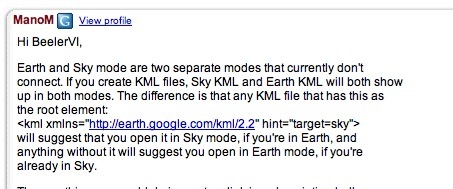
Currently..? Above screendump shows a response by Googler ManoM on the KML Developer pages which caught my eye while doing my weekly checkup on new discussions and topics. Still no time to do a proper scope of all the new stuff that came out with kml2.2 and Google Earth 4.2 but this provides an interesting lead when I'll find that time.
User Generated Content Generator, aka a human being
Posted on Monday, August 13, 2007
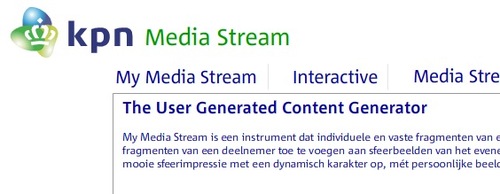
Talking to a friend here in Amsterdam who is in the online video business (MyVidayo), he points me to a website with the term 'User Generated Content Generator' (click My Media Stream)...what is that all about? Recursion? Abstraction? Web3.0? Agents? Meanwhile, Tim O'Reilly posts an insightful list of quotes.
NASA and Microsoft: Photosynth Exploration
Posted on Monday, August 6, 2007
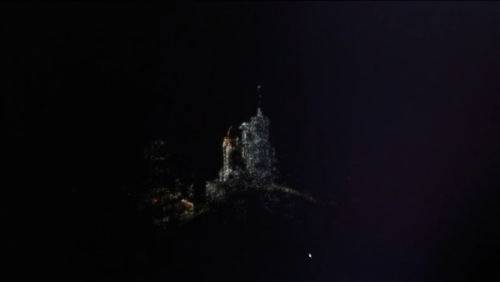
Just in (and spreading on the Internet like a wildfire, like here, here, here and even here): NASA & Microsoft collaborate by making available a Photosynth environment of the Shuttle launch pad at the Cape. Beautiful job!! (its only viewable on XP SP2 or Vista, but for Mac users there is at least a video to see what they are missing ;)
I remember posting a remark on the Photosynth website once suggesting they'd make a Photosynth environment of all Earth photos taken from space, but I wonder whether that is actually feasible given de lack of depth of these images and the changing weather patterns.
Btw, in case you're interested, here's a 58min GoogleVideo going into some of the details of a tool like Photosynth, except this one is not Photosynth but Photosketch (via).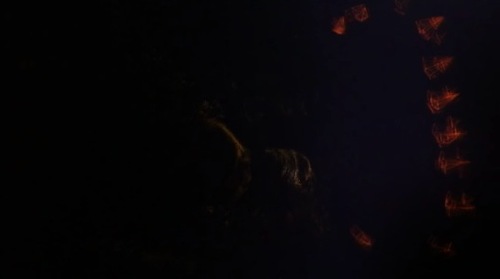
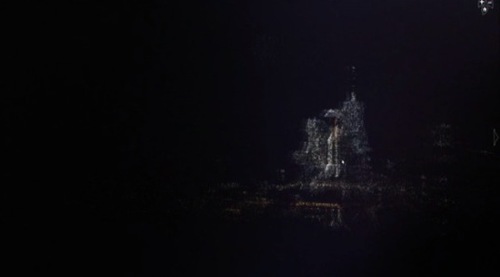
Dressing up Amsterdam
Posted on Tuesday, July 24, 2007
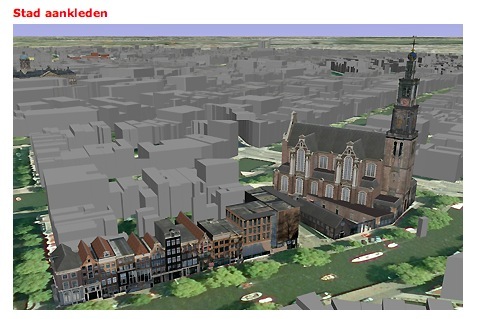
Meanwhile, down on Earth...Just got this link send to me by a collegue. The city of Amsterdam is offering its greyscale 3D representation in Google Earth (blogged about at GEB) to its citizens, offering us to dress up our own city. Its a pity they don't offer an English version of the page, but in short it explains a partnership between Amsterdam and Google and points to a manual on how to build and upload your own user generated buildings to the Google Warehouse. Over at my other blog I just posted a UGO visualisation of the tour of 10 building highlights that have already been modeled by the city's Geo division.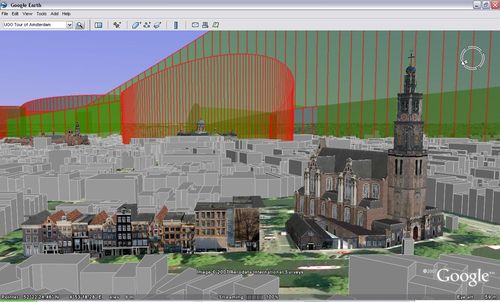
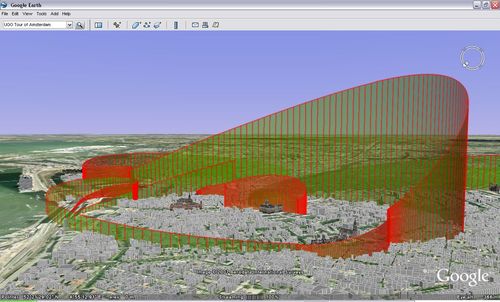
Catch up time
Posted on Tuesday, July 24, 2007
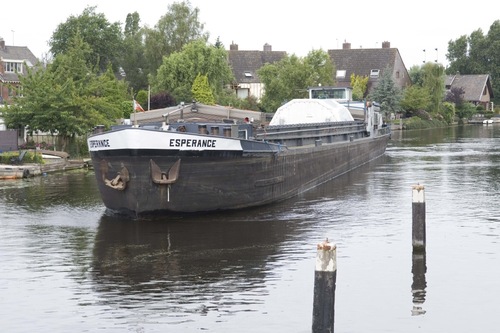
Bloggin' has been sparse these last few weeks, partially because of my latest dive into UGO development. Assuming you read OgleEarth and Google Earth Blog, you are pretty well covered on interesting news coming out these last few weeks. Just a few things worth (re)blogging:
- The Automated Transfer Vehicle (ATV) was transported from ESTEC to Kourou for launch to the ISS next year. There is a nice photo report at ESA, amongst which above photo. A Billion+ craft going through the Dutch canals ;)
- The first Metaverse Roadmap (MVR) is out. An inspiring read!
- NASA has now its own layer inside Google Earth. Still rather rudimentary, like the ESA layer, but a good start. (via Google LatLong blog)
- Barnabu blog posted two space related kml's showing the Moons and the planets in a solar system context (via GEB). Its latest addition, the Cosmic Microwave Background Radiation
- OgleEarth has been ogling Mars. And again. Looking at the word 'ogling' a couple of times, its about time to have a better understanding of what to ogle actually means. As a Dutchman I usually assume I have a comprehension of the English language, but most of the time I know I miss the subtleties of knowing the real English use of a term. For my own understanding, here is the Merrian-Webster dictionary explanation:
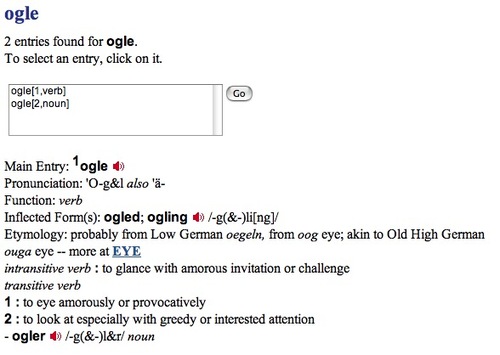
Aha! How about OgleMars.com Stefan? ;)
Light posting ahead
Posted on Saturday, May 12, 2007
Haven't been very active on this blog lately, which is mainly due to my full focus on the development of my UGO project, making me less susceptible to reading my section of the blogosphere on all the news coming out on a daily basis. I haven't finished my first build yet, so this light posting will likely continue for the coming days/weeks untill I finalise a first UGO app. In the meantime, some interesting developments worth noting:
- Search Engine Land (definitely a good read)
- a joke
- Anil Dash post
- News.com
And of course there is the news of a new WorldWind JAVA release.
One of these weeks...
Posted on Friday, May 4, 2007
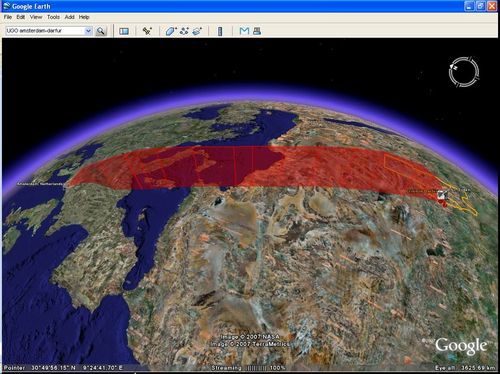
One thing that has intrigued me for some time is the possibility to visualise my flightpath while surfing around in Google Earth. With a background in aerospace engineering, I guess the idea of orbiting the Earth comes somewhat natural to me (at least in spirit), and I have always found it striking that the movement of navigating Google Earth resembles the path of spaceflight hardware, be it rocket launches, ICBMs, re-entry capsules, Low Earth orbiting satellites, the ISS, basically anything space related (near Earth). This is also the reason why I started experimenting with my little python script (earlier post). Being somewhat of a mac guy, the fact that I was coding python to interface with the Google Earth COM API (only available in windows) kind of felt akward because it would not allow me to implement my idea as a cross platform tool. Untill the cross-platform GE Sharing showed me the way...
The last few weeks were one of these weeks where everything seemed to come together in that respect. First there was the introduction of the Darfur layer in Google Earth on April 10th (an eye opener!), followed about a week later with the introduction of the GE-sharing application. Following my somewhat premature comment on the Darfur implementation (good point OgleEarth), and OgleEarth's comment on my little python visualisation script, I figured it was time to put my mouth where my money is.
So, to put a long story short, I basically started a 2-week coding trip (lots of pizza, little sleep), working my way through CGI programming, python, KML, and server-client architecture, aiming to put my python script to use in a similar fashion as had been done so cleverly by the GE Sharing guys. But just when I thought I was closing in on it last weekend, I ran into some issues (both KML/networklink related and python related) which made me come to a somewhat unanticipated halt...
Nevertheless, even though my objective of a cross platform Google Earth visualisation tool has not materialised (yet!), I have been having a lot of fun flying around in Google Earth, testing my algorithms, visualising a lot of different flightpaths, and learning about the nitty gritty details of coding python, KML and cgi by trial and error. Along the way I have collected a wide variety of screendumps logging my progress, and I like these images already well enough to wanting to share them. So with my aim to continue the development of my little app (which I dubbed 'UGO', for 'User Generated Orbit'), I started a new blog called UGO where I will post some of the progress I made sofar and will keep on posting my progress towards this goal.
ps. Following up on my comment v.v. Darfur (earlier post), one of the other ideas that came to mind about how to harnass the collective outcry would be for people to use something like my little app to upload their personal 'Darfur UGO' and then aggregrate them all into one big Darfur layer, showing our concern the 'Google Earth way' ;) Here is mine already: kmz file.
The future is process, not a destination
Bruce Sterling
Everything is ultimately becoming information technology
Ray Kurzweil
Data is the Intel inside
Tim O'Reilly
There is only one machine and the web is its OS
Kevin Kelly
The medium is the message
Marshall McLuhan
